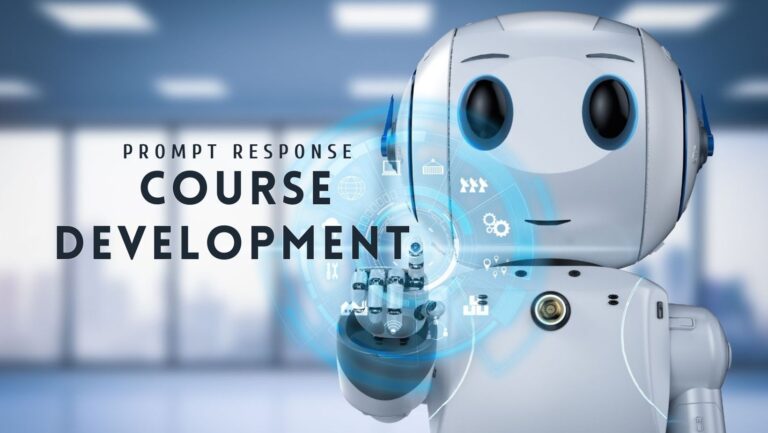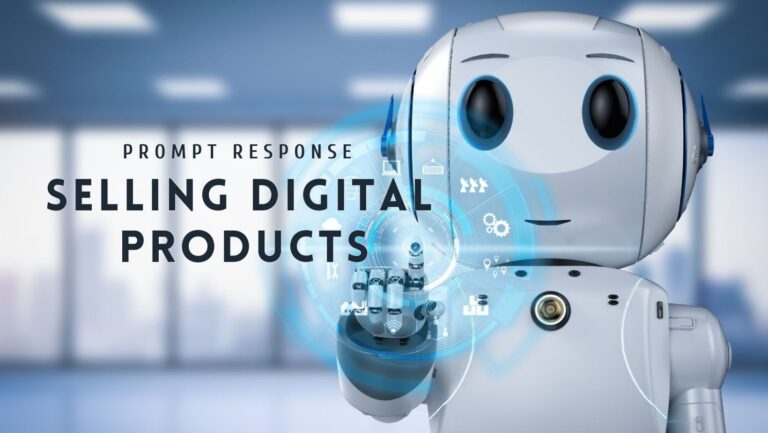AIOps: The Future of IT Operations with 7+ Platforms

Businesses are constantly seeking smarter ways to streamline operations, boost efficiency, and reduce costs.
AIOp ( Artificial Intelligence for IT Operations) is one of the most transformative solutions tackling these modern challenges head-on.
AIOps leverages the power of artificial intelligence and machine learning to automate, enhance, and evolve IT operations.
By shifting from reactive troubleshooting to proactive, data-driven decision-making, AIOps empowers organizations to monitor, optimize, and future-proof their IT environments with unprecedented precision.
This article walks you through a step-by-step guide to understanding, implementing, and unlocking the full potential of AIOps.
Understanding AIOps
AIOps is a multi-layered technology platform that automates and enhances IT operations by using analytics and machine learning.
It involves the use of
- big data
- data collection
- data processing
- data analysis
- data interpretation
The goal of it is to provide a single, unified view of IT operations and infrastructure, allowing for faster problem detection and resolution.
Key components of AIOps include
Automation: AIOps can automate routine tasks, freeing up IT staff to focus on more complex issues. This can include tasks like system monitoring, issue detection, and even some aspects of issue resolution.
Machine Learning: AIOps platforms use machine learning to identify patterns and anomalies that might indicate a problem. This can help IT teams to identify issues before they become serious problems.
Big Data: AIOps platforms can manage large amounts of data from various sources. This can include system logs, monitoring data, and other types of IT data. This data is then used to provide insights into the IT environment.
Insights and Analysis: By analyzing the collected data, AIOps can provide valuable insights into the IT environment. This can help IT teams to make more informed decisions and to identify potential issues before they become serious problems.
Integration: AIOps platforms can integrate with other IT systems and tools. This can help to provide a more unified view of the IT environment, making it easier to manage and monitor.
The Benefits of Implementing AIOps

The adoption has been growing rapidly, with Gartner predicting that by 2024, 40% of companies will use AIOps for application and infrastructure monitoring.
This is part of a broader trend towards “EverythingOps“, where operations are aligned with broader business strategies.
Implementing AIOps can have several benefits
Improved IT Operations Management: Automate routine tasks, reducing the workload for IT teams and improving the efficiency of IT operations.
Enhanced Network Monitoring and Management: Monitor network performance and detect potential network issues, ensuring smooth and efficient network operations.
Optimized Data Center Management: Monitor and manage the performance of data centers, detecting potential issues before they impact the performance of the data center.
Effective Cloud Management: Manage and optimize cloud resources, monitoring cloud performance, managing cloud costs, and optimizing cloud resource usage.
Streamlined Incident Management: Automate the incident management process, detecting incidents, diagnosing the cause of incidents, and even resolving some incidents automatically.
Enhanced Security Operations: Enhance security operations by detecting unusual behavior or anomalies that might indicate a security threat, improving the detection and response to security threats.
Where and How to Implement AIOps

It can be implemented in a variety of IT environments, from small businesses to large enterprises, and across various industries.
Here are some examples of how and where AIOps can be implemented
IT Operations Management:
Automate routine tasks, such as monitoring system performance, detecting anomalies, and even resolving some issues. This can help to reduce the workload for IT teams and improve the efficiency of IT operations.
Network Monitoring and Management:
Monitor network performance and detect potential network issues. This can help to ensure that the network is running smoothly and efficiently and can help to prevent network outages or slowdowns.
Data Center Management:
Monitor and manage the performance of data centers. This can include tasks such as monitoring server performance, managing storage capacity, and detecting potential issues before they impact the performance of the data center.
Cloud Management:
Manage and optimize cloud resources. This can include tasks such as monitoring cloud performance, managing cloud costs, and optimizing cloud resource usage.
Incident Management:
Automate the incident management process. This can include tasks such as detecting incidents, diagnosing the cause of incidents, and even resolving some incidents automatically.
Security Operations:
Enhance security operations by detecting unusual behavior or anomalies that might indicate a security threat. This can help to improve the detection and response to security threats.
In terms of how to implement and it involves the following steps
- Define Your Goals: Understand what you want to achieve. This could be improving system uptime, reducing the time to resolve incidents, or optimizing cloud costs.
- Choose the Right AIOps Platform: There are many platforms available, each with its own strengths and weaknesses. Choose a platform that aligns with your goals and fits well with your existing IT environment.
- Integrate with Existing Systems: AIOps platforms typically need to be integrated with your existing IT systems, such as your IT service management (ITSM) system, your monitoring tools, and your cloud platforms.
- Train Your Team: Ensure that your IT team is trained on how to use the platform and how to interpret the insights it provides.
- Iterate and Improve: Once you have implemented AIOps, continue to monitor its performance and make improvements, as necessary. This could involve tuning the machine learning algorithms, adding new data sources, or adjusting your automation rules.
Choosing the Right AIOps Platform

Choosing the right AIOps platform is a critical step in the implementation process.
There are many platforms available, each with its own strengths and weaknesses.
When choosing a platform, consider factors such as:
- ease of use
- integration capabilities
- scalability
- cost
It’s also important to consider the specific needs and goals of your organization.
7 Common AIOps Platforms
1. IBM Watson AIOps
Description: IBM Watson AIOps uses AI to automate how enterprises self-detect, diagnose, and respond to IT anomalies in real time. It helps businesses to reduce IT incidents and decrease their resolution time.
- Pros: It integrates well with other IBM products and services, and it’s backed by IBM’s strong reputation in the AI space. It also offers robust automation capabilities.
- Cons: It may require a significant investment of time and resources to fully implement and customize. It may also be overkill for smaller businesses with less complex IT environments, and Instana by IBM may be more suitable.
2. Splunk IT Service Intelligence (ITSI)
Description: Splunk ITSI leverages AI to predict and prevent problems before they impact revenue and customer experience. It provides a centralized overview of critical IT services for proactive problem-solving.
- Pros: It offers powerful analytics capabilities and is highly customizable. It also integrates well with other Splunk products.
- Cons: It can be complex to set up and manage, and it may require a significant investment in training for IT staff.
3. Moogsoft AIOps
Description: Moogsoft AIOps assists development and operations teams in becoming smarter, faster, and more effective. The platform frees teams to do what they do best by leveraging AI to automate tedious operational tasks.
- Pros: It’s known for its strong anomaly detection capabilities and its collaborative features that help IT teams work together more effectively.
- Cons: It may require a significant amount of customization to fit with specific IT environments, and some users report that it can be complex to set up.
4. BigPanda
Description: BigPanda AIOps platform centralizes and correlates massive volumes of IT noise, enabling IT teams to detect, investigate, and resolve incidents faster and more easily.
- Pros: It’s praised for its user-friendly interface and its strong correlation capabilities. It also integrates with a wide range of IT monitoring tools.
- Cons: Some users report that it can be complex to set up and that it may require a significant amount of customization.
5. Dynatrace
Description: With autonomous and intelligent observability, Dynatrace simplifies cloud complexity and accelerates digital transformation.
- Pros: It offers a wide range of features, including application performance monitoring, infrastructure monitoring, and digital experience monitoring. It’s also known for its strong AI capabilities.
- Cons: It can be expensive, particularly for smaller businesses. Some users also report that it can be complex to set up.
6. Datadog
Description: Datadog is a monitoring and security platform for cloud applications. It integrates information from servers, containers, databases, and third-party services to make your entire stack observable.
- Pros: It offers a wide range of integrations and is known for its strong analytics capabilities. It also offers features for both infrastructure monitoring and application performance monitoring.
- Cons: It can be expensive, particularly for larger IT environments. Some users also report that its alerting capabilities could be improved.
7. New Relic
Description: New Relic’s platform offers observability for improved uptime and performance, incident detection, and on-call management.
- Pros: It offers a wide range of features, including application performance monitoring, infrastructure monitoring, and digital experience monitoring. It’s also known for its user-friendly interface.
- Cons: It can be expensive, and some users report that it can be complex to set up. Some users also report that its alerting capabilities could be improved.
The best platform for your organization depends on your specific needs, goals, and existing IT environment.
It’s important to thoroughly evaluate each option and consider factors such as ease of use, integration capabilities, scalability, and cost.
Understanding these differences, you can make an informed decision about which platform is the best fit for your organization.
Find more information on picking the right platform HERE
Final Thoughts

AIOps is a strong tool for modern IT operations, allowing for proactive, data-driven management and optimization of the IT environment, and its adoption is projected to increase as more firms experience digital transformation.
Businesses can use AIOps to improve their IT operations, decrease expenses, and drive company growth by knowing what it is, how it works, and how to adopt it.
Not merely technology. AIOps is a paradigm shift in IT operations. A culture shift toward data-driven decision making and automation is required.
It is also critical to establish the business objectives and to assess the impact of AIOps on these objectives, which ensure implementation generates actual business advantages.
FAQ
Q: What is AIOps?
A: AIOps stands for Artificial Intelligence for IT Operations. It’s a multi-layered technology platform that automates and enhances IT operations by using analytics and machine learning.
Q: What are the benefits of implementing AIOps?
A: AIOps can improve IT operations management, enhance network monitoring and management, optimize data center management, effectively manage cloud resources, streamline incident management, and enhance security operations.
Q: Where can AIOps be implemented?
A: AIOps can be implemented in a variety of IT environments, from small businesses to large enterprises, and across various industries such as IT operations management, network monitoring and management, data center management, cloud management, incident management, and security operations.
Q: How do I implement AIOps?
A: Implementing AIOps typically involves defining your goals, choosing the right AIOps platform, integrating it with existing systems, training your team, and continuously monitoring its performance and making improvements, as necessary.
Q: How do I choose the right AIOps platform?
A: Choosing the right AIOps platform depends on your specific needs, goals, and existing IT environment. Factors to consider include ease of use, integration capabilities, scalability, and cost.
Q: What are some popular AIOps platforms?
A: Some popular AIOps platforms include IBM Watson AIOps, Instana by IBM, Splunk ITSI, Moogsoft AIOps, BigPanda, Dynatrace, Datadog.
Bio

Ronnie Patterson
Ronnie Patterson, founder of MagnÜron, is a multifaceted entrepreneur with a diverse background in music, electronics engineering, and engineering management. Drawing on experience across various industries, He offers expertise in SEO, operations, and strategy to help businesses thrive. Possessing a unique perspective and unwavering commitment to collaboration, and ideal partner for growth and success.






